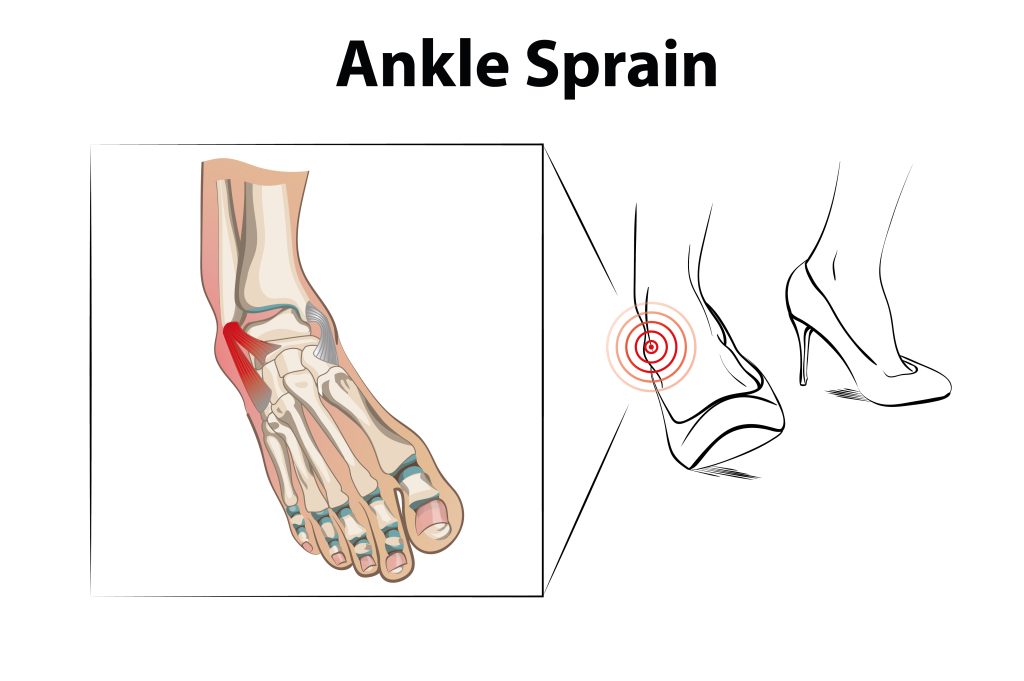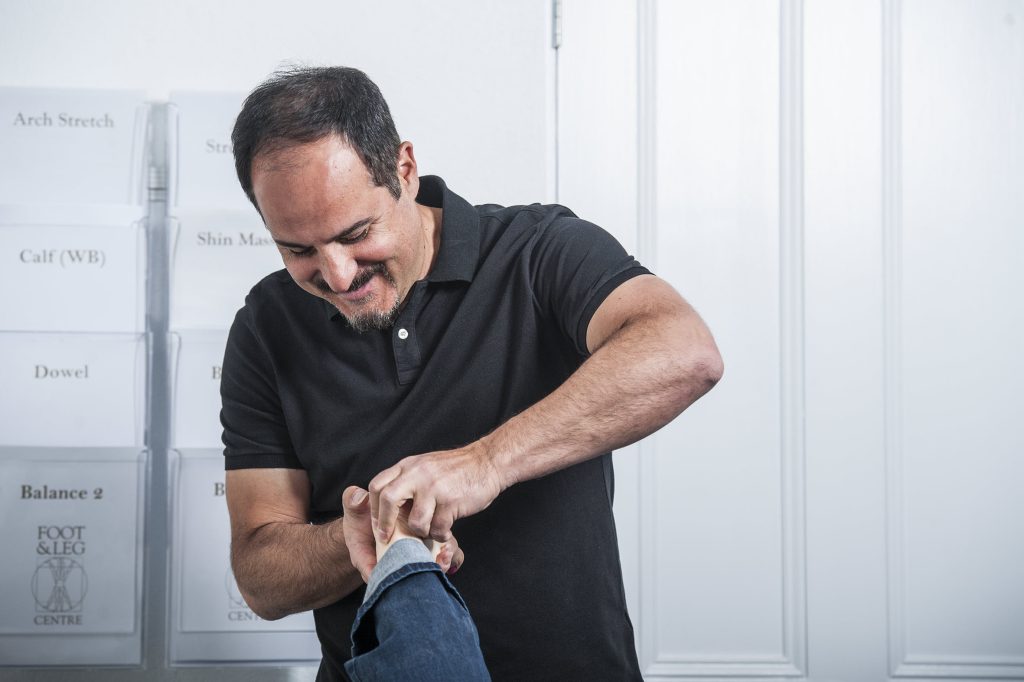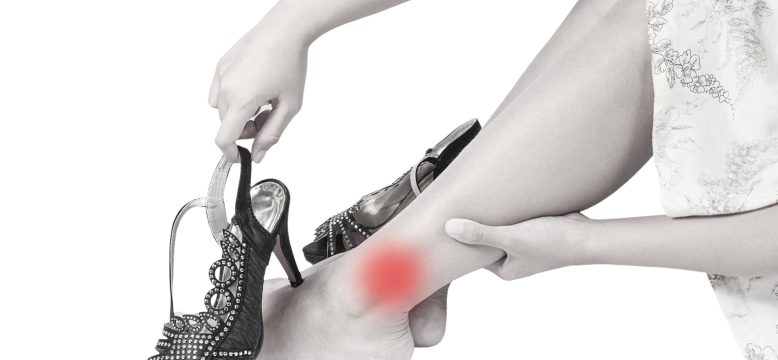So you’ve sprained your ankle, done the rehab and its been months but your ankle still doesn’t feel right. Maybe you are finding it difficult to wear your high heels again. Perhaps stairs are a challenge or you can’t squat or stretch your calf muscle like you used too and maybe your ankle just feels stuck.
If this sounds all too familiar then keep reading…
Sprained ankles are one of the most common injuries of the foot and leg. Simple things like:
• Awkwardly stepping while running or walking, or
• Stepping up or down a step or gutter
• Walking on uneven ground or stepping in a pothole
• Or falling or excessively twisting your foot in sports like football, netball, basketball, and soccer are common ways people sprain their ankle.
When we sprain or roll our ankle the ligaments in our ankles can become overstretched and injured. Often you will experience immediate pain and then swelling around the ankle area, it can be difficult to stand and walk and this usually indicates you’ve sustained some sort of ligament or muscle damage. If it’s really sore x-rays are often ordered to rule out broken bones.
Most people with use the RICE principle to treat their ankle sprain. ‘RICE’ is an acronym that stands for: Rest, Ice, Compression and Elevation and within a week or so they are starting to walk again and within 4-6 weeks they are usually back to full activity again.
“Ever since I had that sprained ankle, my foot has never been quite the same”
Unfortunately for some people they do all the right things, the injured tissue has healed but their ankle and foot just doesn’t feel right. Maybe you only twinged your ankle, there was no significant pain or injury at the time and you could walk normally pretty much straight away. But 3, 6, or 12 months later you realise your ankle just hasn’t been the same ever since.
If you can relate to any of this then its important to find out “why” because in our experience if the ankle doesn’t feel like its functioning normally within 3 months of the injury then it usually won’t just get better on it’s own.
What we’ve noticed is that there are 3 main reasons why people are experiencing ongoing pain and discomfort months after they sprained their ankle:
• The foot is incredibly complex and sometimes the twisting and rolling action of the initial injury causes displacement and mechanical changes in the bones and joints in your foot leading to compensation and ongoing issues. There are 26 bones and 43 joints in each foot so there is a lot of potential for something to go wrong with an ankle sprain!

• The incredibly important forward and back (anterior and posterior) gliding motion of the ankle joint is lost. For your ankle to be able to move through its full range of up and down (plantarflexion and dorsiflexion) range of motion it must be able to slide back and forth slightly in the ankle joint. This accessory movement is often restricted or lost after an ankle sprain.
• Spraining your ankle can disrupt the neurological pathway connecting your foot to your brain. Normally, we don’t need to think about being able to walk; our brain automatically knows the position of our feet, and how to move them. However, an ankle sprain can interrupt these messages between the brain and foot.
As a result, the your ankle can still hurt and just not feel right months after the original sprain.
Every single day as a Podiatrist I see people who are desperate to find a solution for their ongoing ankle pain. They want to get back their confidence, be able to walk and exercise freely and wear their heels again and they just can’t seem to find an answer.
So What Do You Do If Your Ankle Still Hurts After 3 Months?
Simply put “If pain persists, see a foot health professional”. I know it sounds cliché, but seriously, if pain or discomfort persists further treatment may be required.
Fortunately, there is a treatment option: Foot Mobilisation Therapy (FMT). Foot mobilisation therapy is a manual therapy treatment specifically developed to improve your foot and ankle function by targeting stiff, mal-aligned or dysfunctional joints to improve the function of your lower limb. These techniques focus on improving and restoring the normal range of pain-free joint motion.
The old saying goes ‘Everything works best when it’s in the right place’. When your feet are correctly aligned and functioning as nature intended the incredible power of your body’s restoration system can work its magic. This allows you to naturally heal your ankle problem.

Here are some of the benefits you will receive with Foot Mobilisation Therapy (FMT) treatment:
• Gentle release of connective tissue restrictions.
Foot Mobilisation Therapy (FMT) helps break up adhesions that prevent joint mobility operating at its best.
• Improvement in the quality of movement in your joints as they become more mobile.
By stimulating the production of synovial fluid your joints are effectively getting a grease and oil change with every treatment.
• Better Balance
As your base of support becomes more stable this promotes the body’s balancing system (proprioception) improving your balance and coordination.
• Muscles surrounding the joints becoming stronger.
Foot Mobilisation Therapy (FMT) revitalises the nerve messages from the brain to the muscles involved and when combined with your prescribed foot exercises build muscle strength.
• Pain messages are reduced.
This is achieved by stimulating the mechanoreceptors of the joint and preventing the Type IV nociceptor impulses.
To support your Foot Mobilisation Therapy (FMT) treatments your practitioner will prescribe specific exercises focused on strengthening, stretching and proprioception. These corrective exercises ensure that you achieve the best possible results.
So, if you are suffering with a sore ankle several months after a sprain, don’t “put up with” or just accept it as “it is what it is or” blame it on “old age”. There is help available and Foot Mobilisation Therapy Treatment (FMT) is a powerful way to address structural and mechanical problems of the feet and legs.
Simply, call Raquel at our Kent Town centre on 8239 0800 or Wendy at our Glenelg centre on 8294 0100 for an appointment today or CLICK HERE to book your no-obligation ankle pain assessment today.






No comments yet.